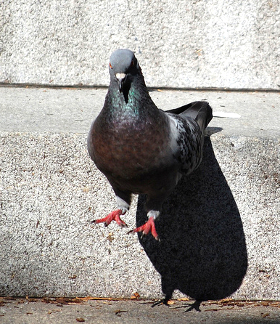Bird-copying flight design takes off
 Australian engineers are stealing some natural techniques to improve robotic flight.
Australian engineers are stealing some natural techniques to improve robotic flight.
A collaboration between the Defence Science and Technology Organisation (DSTO), the RMIT University research team is aiming to build an autonomous unmanned aircraft that can mimic birds.
The airborne-bot will be programmed to use warm air and updrafts around buildings to stay afloat.
“Birds make soaring look easy, but when we try to mimic what they know by instinct, we realise just how far advanced nature is in its designs,” said lead researcher Dr Reece Clothier.
Dr Clothier explains that soaring birds use positive air flows generated around features such as cliffs or large buildings to maintain lift.
“This research aims to develop the sensing and control systems that will allow a small fixed-wing unmanned aircraft to achieve the same thing,” he said.
The focus is on proving the feasibility of “urban soaring”, combining real-time sensing of wind with complex flow models to find positive airflows around large buildings.
Flying a small aircraft in those updrafts could significantly increase its endurance.
The long-term goal is to design an unmanned aircraft that can predict airflows in its surrounding environment and - by using this information - minimise its energy consumption, maximise its endurance and avoid areas of high turbulence.
“Small aircraft used for communications relay or surveillance and reconnaissance could greatly benefit by having a means of exploiting naturally occurring updrafts and avoiding the deleterious effects of turbulence in urban environments,” DSTO’s Dr Jennifer Palmer said.
“DSTO undertakes research in a number of areas related to autonomous unmanned aircraft, and this is a great opportunity to engage with academia on a project with both scientific challenges and real-world outcomes.”
The project is supported by the Defence Science Institute and RMIT’s Sir Lawrence Wackett Aerospace Research Centre.








 Print
Print